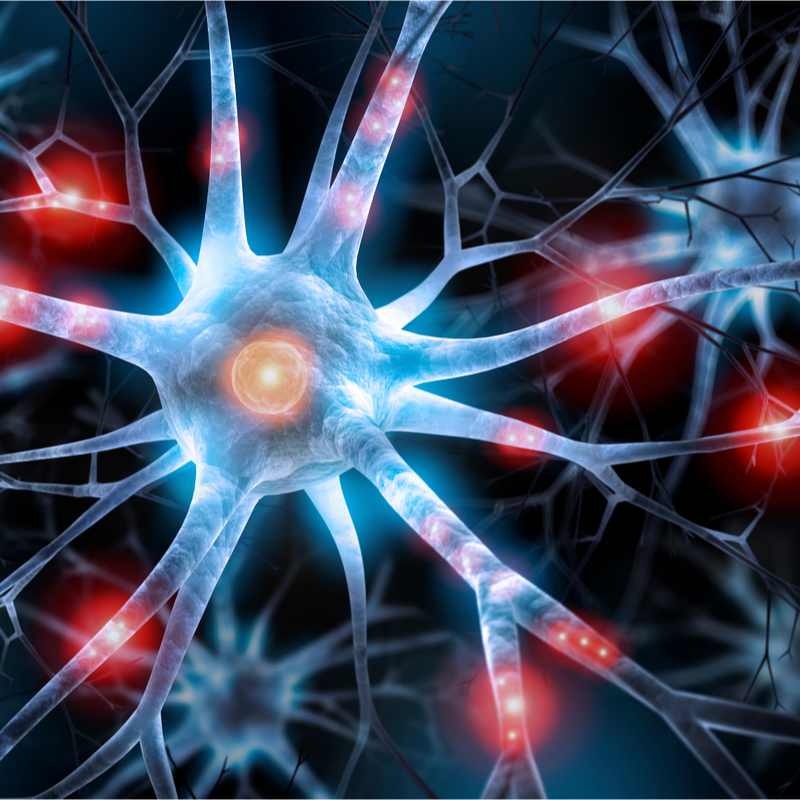
What is neuroblastoma?
Neuroblastoma is the second most common childhood cancer in Germany, of which the average is younger than six years. As a rule, a neuroblastoma occurs in the spinal column, in the adrenal medulla, but also in the nerve plexuses to the right and left side of the spinal column, usually at abdominal level or the level of the pelvis, neck and/or chest. A neuroblastoma forms from the so-called sympathetic nervous system. This is responsible for controlling involuntary tasks in the body such as heart and circulatory function, but also energy metabolism and bladder and bowel activity. At the time of diagnosis, about half of all neuroblastomas have already metastasised.
What types of neuroblastoma are there?
According to the "International Neuroblastoma Staging System" (INSS), doctors divide neuroblastoma into the following four disease stages :
- Stage I: The neuroblastoma can be completely removed by surgery, including the affected lymph nodes, which may contain cancer.
- Stage IIA: The neuroblastoma is clearly demarcated, but cannot be completely removed by surgery . The affected lymph nodes do not contain cancer.
- Stage IIB: The neuroblastoma is clearly demarcated and can be surgically removed if necessary . The affected lymph nodes contain cancer.
- Stage III: The neuroblastoma cannot be removed surgically and has already spread to the lymph nodes located near the tumour or to other areas. Body parts have not yet been affected .
- Stage IV: The neuroblastoma has either spread to removed lymph nodes, skin cells as well as bones, bone marrow and liver and/or has already affected other organs (distant metastases).
- Stage IVS: This tumour stage only occurs in infancy
The
stages differ in whether the tumour has already metastasised
and affected the lymph nodes and what size it
has already assumed. In addition, an initial assessment
is made as to whether and to what extent the tumour needs to be surgically removed
. The determination of the respective tumour stage determines both the
type of treatment and the prognosis of the disease.
What are the symptoms of neuroblastoma?
At the beginning of the disease, neuroblastoma is hardly noticeable or only shows unspecific symptoms, which are caused by the fact that the tumour has already constricted surrounding structures or probably metastases impair organ functions. Depending on the location of the neuroblastoma, different symptoms can be caused. While a neuroblastoma in the thorax can cause shortness of breath, a tumour in the abdominal cavity can cause damage to the urinary flow and even lead to dilatation of the renal pelvis or the ureters (hydronephrosis). A neuroblastoma in the border cord, which runs along the spinal column, can cause paralysis symptoms because it often displaces the nerve roots.
If the neuroblastoma has already metastasised, sufferers often complain of the following symptoms:
- Pain,
- poor general condition,
- Listlessness,
- increased sweating,
- Fever,
- Pallor
- Nausea and/or vomiting,
How is neuroblastoma diagnosed?
Since a neuroblastoma does not always cause complaints, it can occasionally be diagnosed as an incidental finding, for example, during a routine examination at . If, on the other hand, the patient presents with complaints, a physical examination is carried out after taking the medical history. The doctor checks whether there are noticeable changes, for example in the abdomen or neck area, which could be explained by the tumour growth. Imaging procedures such as an ultrasound examination (sonography) can also be used here .
In addition, laboratory tests are used to diagnose neuroblastoma. The doctor looks for so-called tumour markers in blood and urine samples , which indicate that a cancer is present if the concentration is elevated . The tumour markers are also found in the urine. In the case of neuroblastoma , these are mainly the breakdown products of the hormones catecholamines and the so-called enzyme NSE (neuron-specific enolase). If the blood values also show an increased cell metabolism, this could be a further indication of a malignant tumour.
How is neuroblastoma treated?
As with other types of cancer, surgery is the first choice of treatment for neuroblastoma. However, therapy using radiation or the administration of special cancer drugs, so-called chemotherapeutic agents, is also possible. In individual cases, a stem cell transplant can also be carried out and the administration of drugs with retinoic acid can be prescribed. Which therapy is used in each case depends on the tumour stage, but also on the general condition and age of the patient.
While an operation aims to remove the neuroblastoma as completely as possible, without damaging other structures, chemotherapy is then used either to shrink the tumour before the operation (neoadjuvant chemotherapy) or is used to treat an inoperable tumour. In a stem cell transplant, on the other hand, healthy stem cells are taken from the bone marrow of the patient and safely stored. In the next step, all malignant cells are to be destroyed by means of high-dose chemotherapy . The patient's healthy stem cells are then transferred back to the patient via an infusion so that they can once again settle in the bone marrow and form blood cells. Since patients are particularly susceptible to pathogens during a stem cell therapy, special protective measures must be observed.
What is the prognosis for neuroblastoma?
The prognosis of a neuroblastoma always depends on the tumour stage, but also on other factors. Especially young people with neuroblastoma in a low-grade disease stage (stage I, II as well as IVS) usually have a good prognosis. The 15-year survival rate is about 75 percent at . Patients who make up the high-risk group, on the other hand, only have a 5-year survival rate of 30 to 40 percent. Especially in children older than six years, the tumour develops quite quickly. In addition, even with complete surgical removal, there is a risk that the tumour will develop again.
